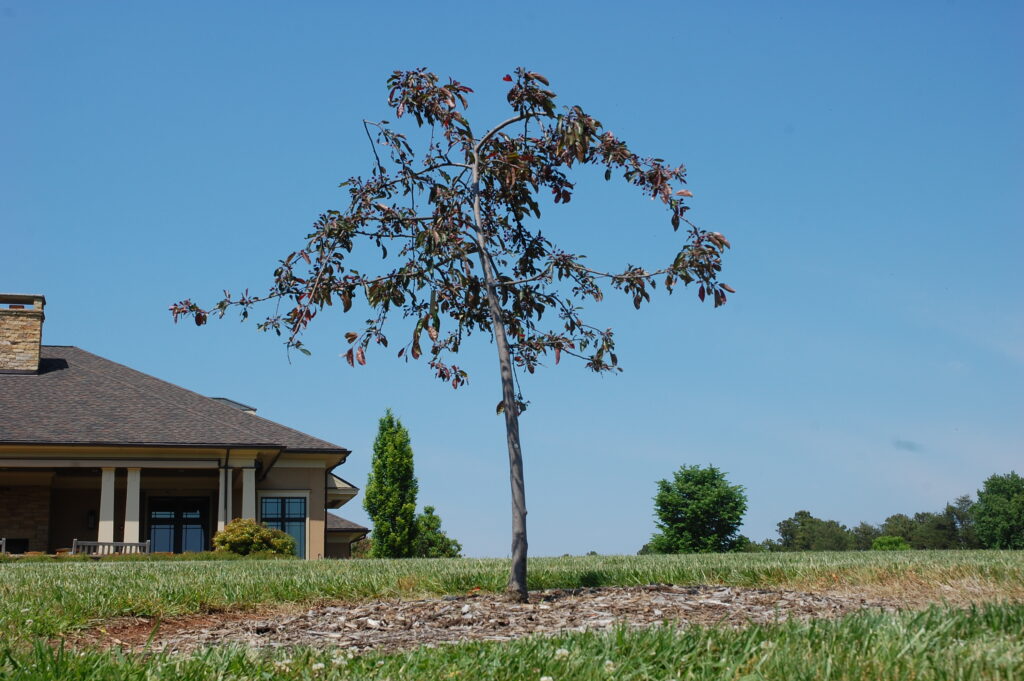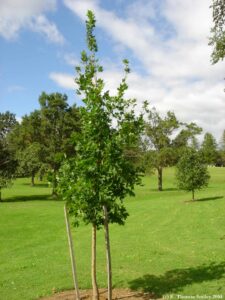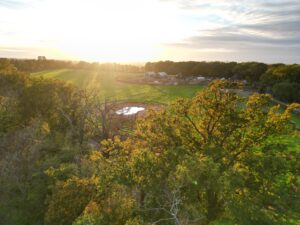You should only stake a newly planted tree to provide support or protect against strong winds or interference from people. Most trees will not require staking. Ultimately, the decision will depend on the tree itself and the location where you plant it.

Tree Considerations for Stakes
When planted properly, healthy, young trees generally don’t need to be staked. Young trees typically already have a root system that can support their size and weight. Occasionally, a tree’s roots will be too small to support the stem and canopy. In these instances, staking will help stabilize the tree and prevent the stem from bending excessively. This ensures the tree remains upright while the roots have a chance to establish. Keep in mind that studies show tree establish more quickly if you do not stake them. With this in mind, only use stakes when absolutely necessary.
Planting Site and Location
Most commonly, windy sites may require staking. Of particular note are locations that are wide open with few surrounding trees to buffer the wind. Another problem might be areas with a lot of pedestrian traffic. If people may inadvertently bump or jostle the tree, staking is probably a good idea. This holds true if you’re planting in an area where vandalism is a concern.

When to Remove Stakes from Newly Planted Trees
Periodically check any stakes or guy wires/guy lines used to support trees. You want to make sure that a support system meant to protect the tree isn’t inadvertently damaging it. Do not use rigid materials around the trunk that rub or dig into the bark and result in injuries. After your tree is in the ground for year, remove any staking or ties. At this point, the tree’s root system has become established and additional support is not needed.



